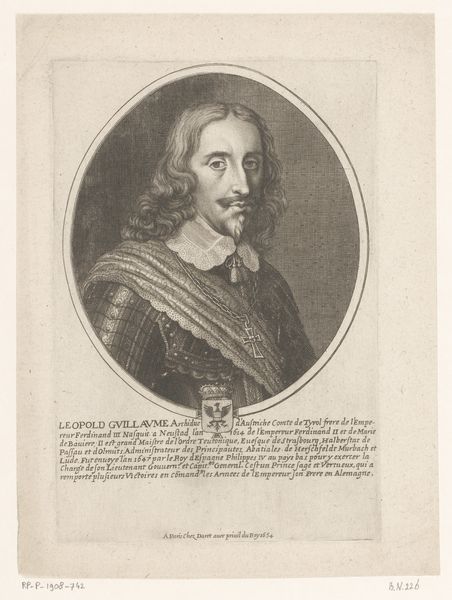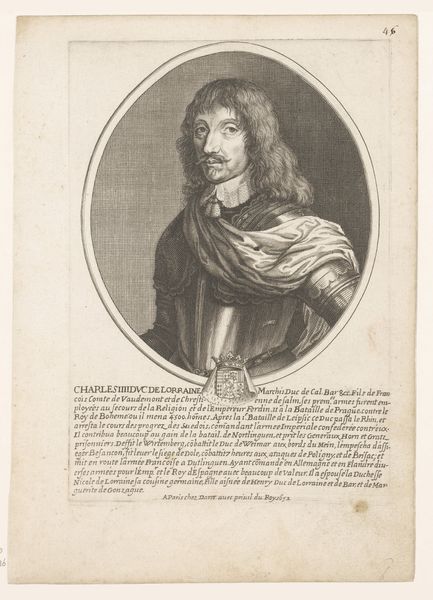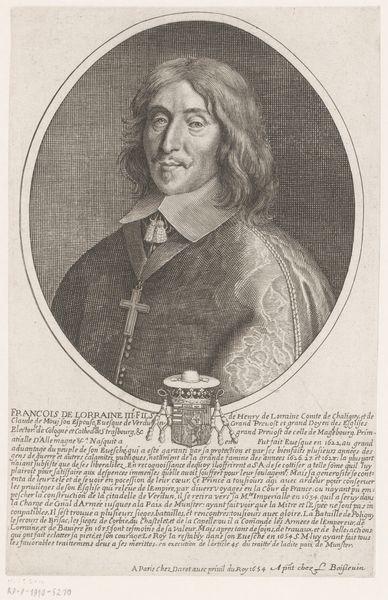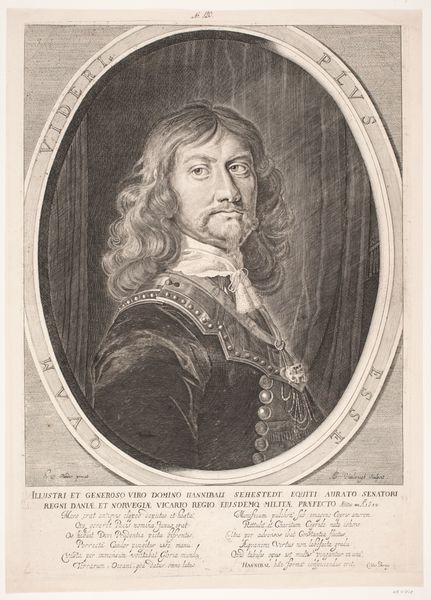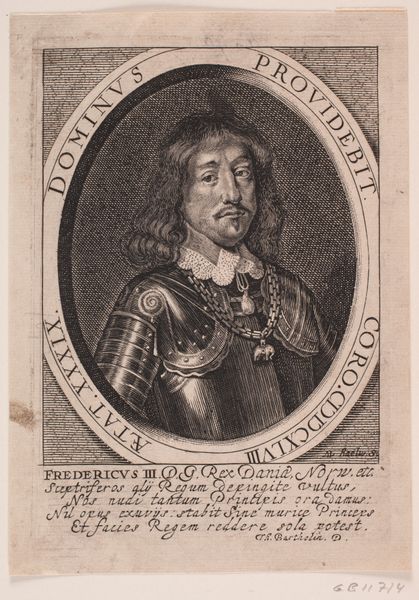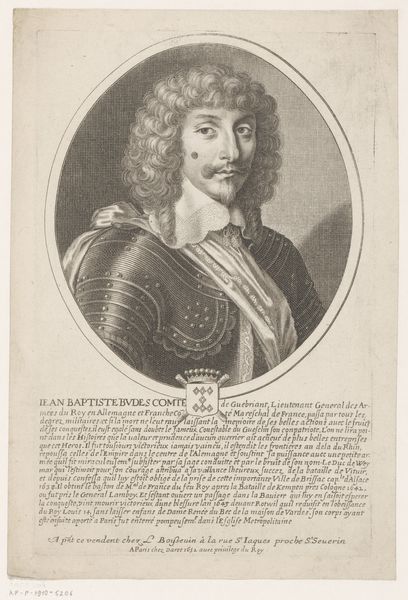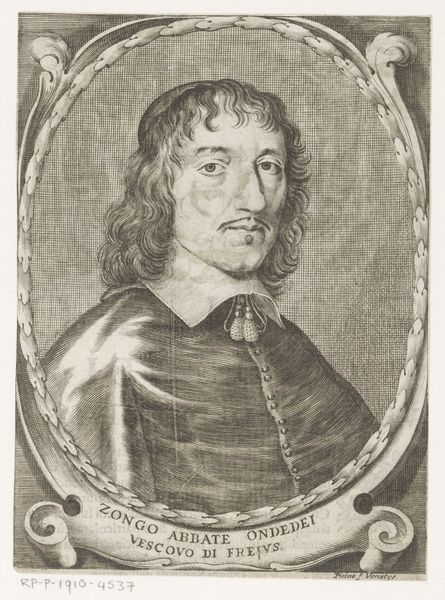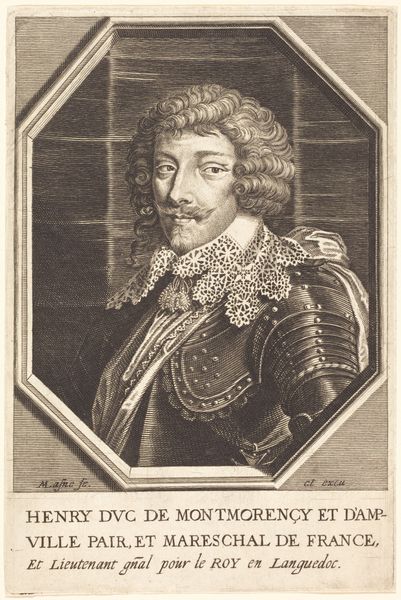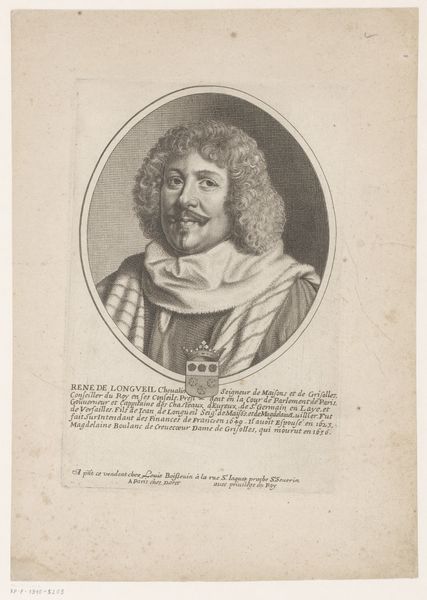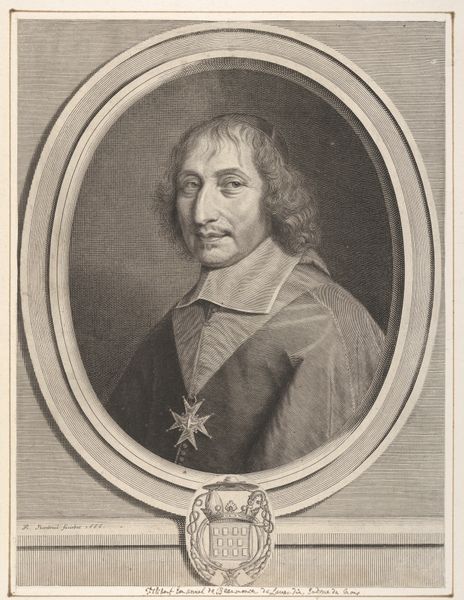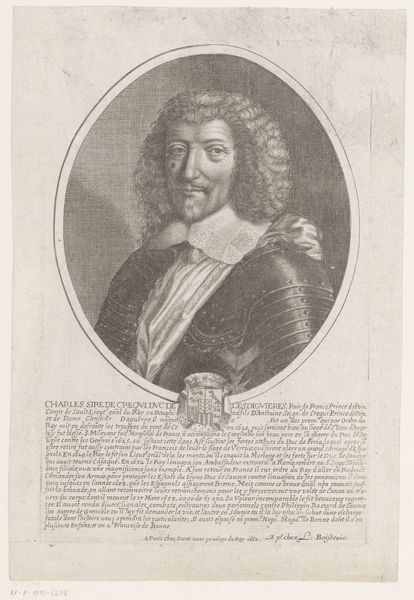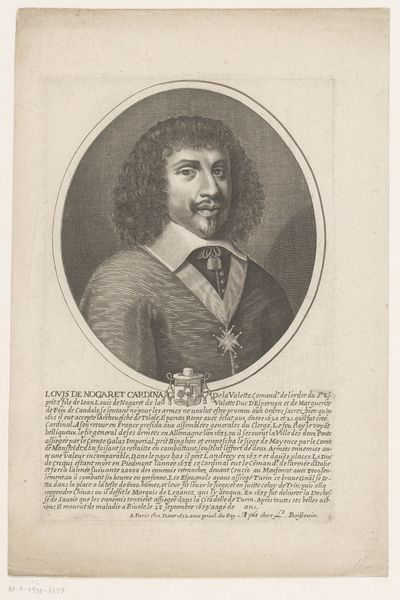
print, engraving
#
portrait
#
baroque
# print
#
figuration
#
line
#
history-painting
#
academic-art
#
engraving
#
realism
Dimensions: height 191 mm, width 128 mm
Copyright: Rijks Museum: Open Domain
Curator: Here we have Pierre Daret’s 1652 engraving, "Portret van François Potier," currently held at the Rijksmuseum. The subject, François Potier, is depicted in a rather stoic pose. What strikes you first? Editor: Immediately? The meticulous detail. It’s almost photorealistic in its rendering, which feels contradictory given it's an engraving. There's a seriousness to him; a weariness, perhaps, etched into his features. It makes me wonder what story his face tells. Curator: It's intriguing to consider the social and historical context. Daret was working in a time when prints like these were crucial for disseminating images and establishing a person's public image. This portrait of Potier likely served to promote his status and commemorate his accomplishments. Editor: And that explains the armour, the elaborately described achievements in the inscription, almost like an ancient form of resume! There’s a theatrical air, carefully designed. I wonder, though, about the contrast between that public face and his internal world. Does the armour hide vulnerability? Curator: Precisely! It's a crafted identity intended for consumption by a specific audience, and speaking of the armor, it connects with his military achievements listed below the image; Potier was a field marshal. The detail in the engraving, the textures and patterns, all work to solidify this image of a powerful man. Editor: The composition with the oval framing device gives it such a formal air. But I am fixated with his eyes. All that formality clashes a bit with this spark. If art history wasn’t my weakness, I’d probably miss that entire complex world beneath the image. Curator: Exactly. And art history gives the means to dig into all of the elements in this engraving and how it shaped his personal and political agenda at the time, making the study all the more revealing. Editor: I agree completely. Now, looking at this artwork again through the prism of context makes for such a layered appreciation of a 17th-century historical narrative, captured in such delicate lines and in this commanding pose.
Comments
No comments
Be the first to comment and join the conversation on the ultimate creative platform.
